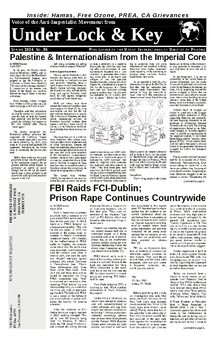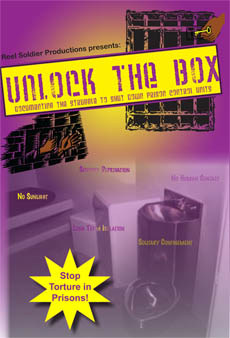
Washington Supermax report
Greetings from the oppressed in the state of Washington’s 2nd fully operational ‘Supermax’ gulag. Since i’ve been imprisoned here by the fascist pigs and imperialistic/racist government and state powers, the conditions have deteriorated a bit. Currently, we are fighting the pigs, A/C’s (assistant cooks), CUS (custody unit supervisor, CO’s (pigz) and the Unit Sgt. concerning the quality/quantity of our food. We’re being given food that is just reheated from servings 2-3 days previous and lacking enough nutrients to benefit us (ie. 2000 calories). We also have no real outside yard access. We go out to a 10’ x 10’ concrete box, with an iron screen mesh high up on a wall that only allows us to get a strip view of the sky. The ventilation in our cells blow hard air 24/7. Our cell lights stay on 24/7 (count-light). [MIM(Prisons) adds: this unit was just opened in October 2007 as the first certified “green” prison building in the state]. All of our cell functions (toilet, hot & cold water, lights, air conditioning, heating) are controlled by the pigz in a control/monitoring booth. The water we sue is “re-claimed” water, water already used, and our showers have inadequate pressure & heat. When placed in the showers we’re put in a cage with open front were both male and female pigs that are walking around can view us taking showers. Since i’ve been here, i’ve seen 3 cell extractions with the “Goon” squad, OC [pepper spray], electrified shields & tasers. They’ve also moved 2-3 guys of my current tier to ISO for no apparent reason other than filing grievances or complain about conditions or lack of general issue items.
I’ve heard through the grapevine that the fascist pigz are looking at out-of-state a prisoner chain of 500 (slaves) to be shipped out to MN, AZ, CO, KY, and IN in the next 12 months. I can’t confirm this, but i am looking into it.
As far as statistics on the number of people in control units in Washington, i cannot verify numbers for Clallam Bay, Stafford Creek or WCC for Women, but i can clarify and confirm for the following prisons:
McNeil Island has three (3) control units, each unit is single cell, 23hr. lock-down. Each unit holds approximately 30 prisoners, for a rough total of 90+. One pod (unit) is seg, 1 pod is IMU and 1 pod is Mental Health IMU/seg combo.
As for Washington State Penitentiary (WSP), they have an ASU/seg unit that holds 195-200 prisoners on 23 hour lockdown. They (WSP) also has a new 1500-2000 bed CC “state-of-the-art” housing unit that just opened, a 96 bed IMU, and a new “supermax” IMU/ASU that i’ve been told holds 199 prisoners. WSP also has an medical/mental health 14 cell (1 man) capacity housing. Then they have a SHU, which is where the mental health/protective custody and death row prisoners are housed and it’s a 260 bed capacity with another 24 cells for seg overflow.
As for Monroe Correctional Complex, SOU/SOC are the same facilities. SOU(Special Offender Unit) is for Medium/Minimum inmates with a 600+ bed capacity (1&2 man cells), SOC (Special Offender Center) is CC for mental health/sex offenders with 4 units; 2 (CC) with 72 bed, 1 man capacity and 2 IMU/ASU with 72 bed, 1 man capacity. The new “supermax” Monroe Correctional Complex-IMU has 120 1-man 23hr lock-down IMU “supermax” housing cells and 120 ASU-“supermax” housing cells. This is one of two new “supermax” units that opened in the last 6 months. Monroe also has a Seg/ASU unit at Washington State Reformatory (WSRU) with 100-115 bed, 1-man cell capacity, 23hr lock-down. Meanwhile, the WSRU-SHU is medical/psych long-term housing with several 100 bed capacity. Also at MCC, the Twin Rivers Correctional Unit(TRU) has a 20 bed “Temp” seg unit.
Washington Correctional Complex at Shelton has an IMU/Seg unit with 144 1-man cells and a 6-man ISO unit known as COU (Crisis Observation Unit).
These figures are as close as possible, and the units are ALL control/long-term ISO with the exception of WCC Shelton COU and TRU’s seg unit. Airway Heights also has a “SMU” (Special Management Unit) Seg which has 45-60 bed capacity of short-term ISO. Again, most of these figures are very close as i’ve either been there before or someone has come through here and let us all know what’s going on elsewhere.
a comrade in Monroe Correctional Complex IMU







